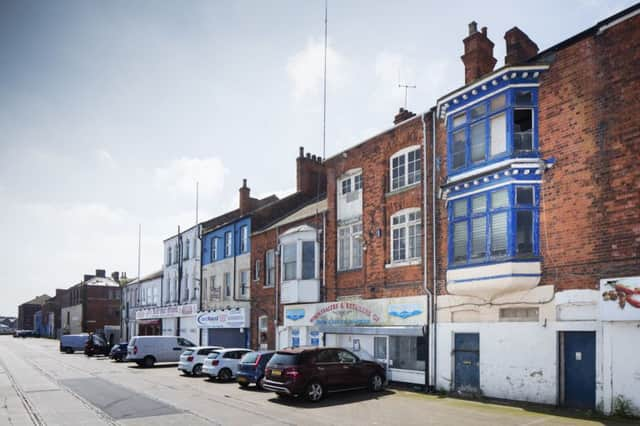The Yorkshire buildings most at risk of going to ruin


The chapel in Salford in which the suffragette Emmeline Pankhurst married, and another in which the Victorian author George Eliot worshipped, have been added to a register maintained by English Heritage of architecture officially considered at risk.
The Grade II* listed St Luke’s Church, where the former Emmeline Goulden married barrister Richard Pankhurst, 24 years her senior, in 1879, is threatened by damage from a leaking roof.
Advertisement
Hide AdAdvertisement
Hide AdHoly Trinity Church in Coventry, which counted Mary Ann Evans – who wrote under the name George Eliot lest her work not be taken seriously – also needs urgent repairs to its roof, English Heritage said.
The church survived the Blitz thanks to its vicar and others sleeping inside and dousing fires during a raid in November 1941.
In total, 242 sites have been added this year to the register, which is in its 20th year, with 318 others no longer considered to be at risk of being lost.
The list now includes 1,489 historic buildings and monuments, 911 places of worship, 2,151 archaeological sites, 99 parks and gardens, four battlefields and four protected wreck sites. Just under 600 of the properties are in Yorkshire.
Advertisement
Hide AdAdvertisement
Hide AdThose newly added include the four-storey workshop range of the Beehive Works in Sheffield, a purpose-built cutlery works dating from the 19th century, which has suffered structural movement and water ingress.
Also added this year is the newly designated Kasbah conservation area in Grimsby, and the former Feversham Street First School in Bradford. However, two-thirds of the buildings and sites on the original 1998 list have been rescued, often due to the dogged determination of local communities and charities.
The latest sites no longer at risk include Milnsbridge House in Huddersfield, once home to the magistrate Joseph Radcliffe, who helped suppress the Luddite riots in the Colne Valley.
The First White Cloth Hall on Kirkgate in Leeds and Bradford’s Lister Mills are said to be “making significant progress” towards being removed from the list. The Leeds property, a rare example of an early 18th century arcaded cloth hall, which helped establish the city as the mercantile heart of Yorkshire, has been derelict for years but is the subject of a redevelopment proposal.
Advertisement
Hide AdAdvertisement
Hide AdLister Mills, which English Heritage describes as “truly monumental”, was once the biggest silk spinning and weaving mill in Britain, its vast chimney inspired by St Mark’s Campanile in Venice.
Duncan Wilson, chief executive of Historic England, said: “We have dedicated time, expertise and money to bring these special but threatened places back into use, and we are proud to have played our part in saving them from neglect.
“Despite the successes, other places continue to fall into disrepair. They have been added to this year’s register and we will focus our attention on them in the years ahead.”
Among the buildings in Yorkshire added to the register this year include Sheffield’s “streets in the sky”, the 1950s housing estate at Park Hill.
Advertisement
Hide AdAdvertisement
Hide AdLarge sections of it have been restored but other parts are continuing to decay.
Globe Works on Sheffield’s Kelham Island have also been added to the list.
Dating from 1825 and incorporating four hand forges and the only known remaining example of urban back-to-back grinding hulls, the Grade II* listed site is the city’s earliest surviving example of a purpose-built cutlery and edge tool works,